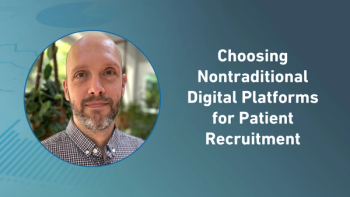
SGS Implements Veeva Vault Management System Globally
SGS, a life sciences, clinical, and bioanalytical contract solutions provider, announced that the company will implement the Veeva Vault CTMS (clinical trial management system) across its network of clinical operations sites for the management of its global clinical study services. Vault CTMS will enable SGS to share reporting capabilities with its clients and deliver greater flexibility in running studies. Together with Veeva Vault eTMF (electronic trial master file.) SGS will begin running studies on Vault CTMS in spring 2019, with any current studies scheduled to end after June 2019 being migrated the new system.
"Veeva Vault CTMS, along with Veeva Vault eTMF will allow us to streamline our clinical trial management and improve decision-making within our planning and operations teams across the Americas and Europe," commented Janelle Johnson, SGS International Project Mangement Director. "SGS is committed to investing where necessary to maintain its leadership position in clinical research, and ensuring it has the most efficient systems, and in-turn, offer the highest level of service and experience to our clients."
"Veeva Vault CTMS will enable SGS' to improve its operational efficiency and drive faster, higher-quality trial execution," added Henry Galio- Senior Director, Veeva Vault CTMS. Now clinicans and managers can have greater oversight and improved decision-making capabilities during studies."
SGS Life Sciences provides clinical research, bioanalytical, biologics characterization, biosafety, and quality control testing. Delivering solutions in Europe and the US, SGS offers clinical trial (phase I and IV) services encompassing clinical project management and monitoring, biometrics, PK/PD modeling and simulation, and regulatory and medical affairs consultancy. SGS has its own clinical unit in Belgium and two phase I patient units based in Belgium and Hungary. SGS has a wealth of expertise in first in human (FIH) studies, human challenge testing, manufacturing challenge agents, biosimilars, and complex PK/KD studies with a focus on infectious diseases, vaccines, and respiratory therapeutics.
Newsletter
Stay current in clinical research with Applied Clinical Trials, providing expert insights, regulatory updates, and practical strategies for successful clinical trial design and execution.






.png)



.png)



.png)
.png)
